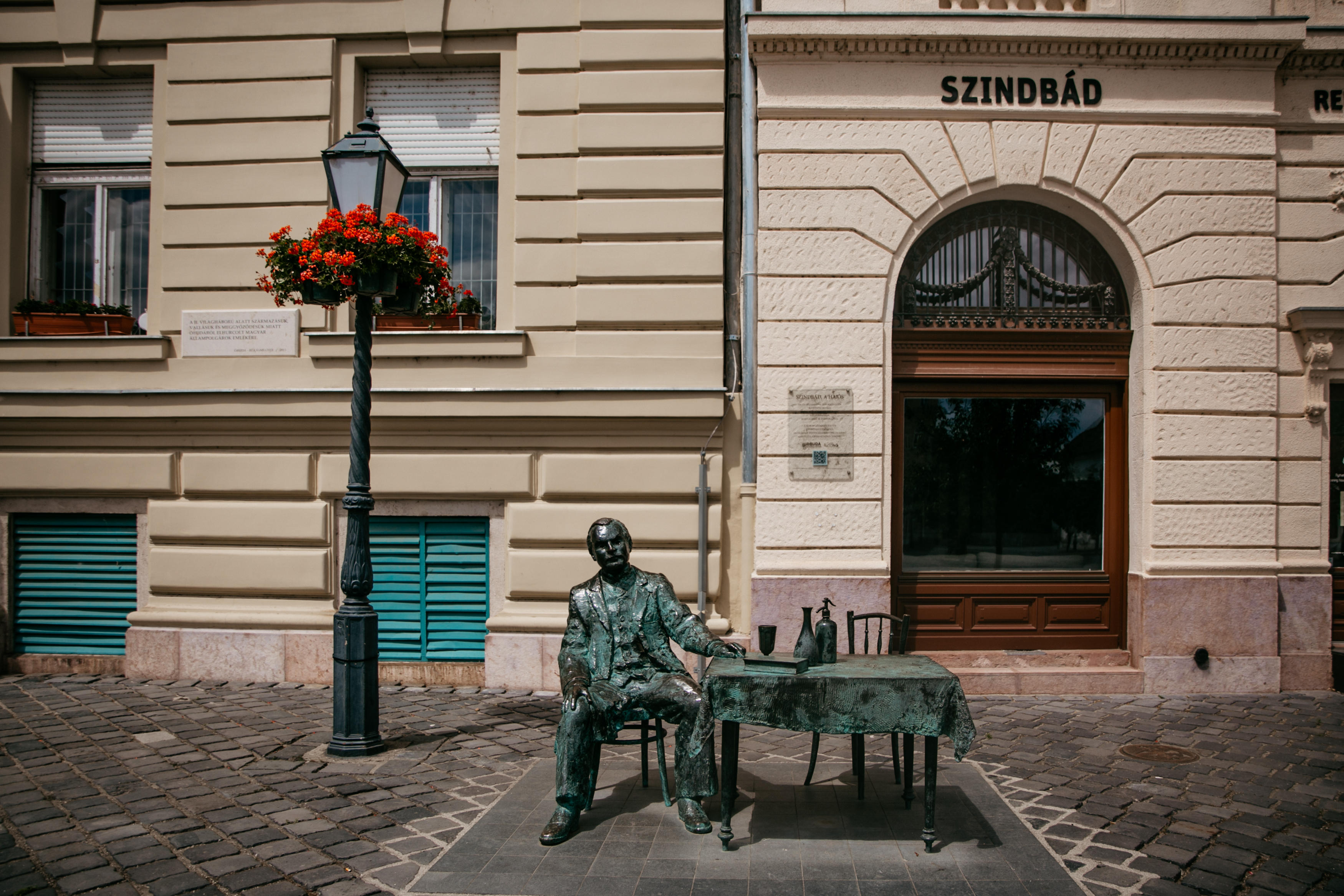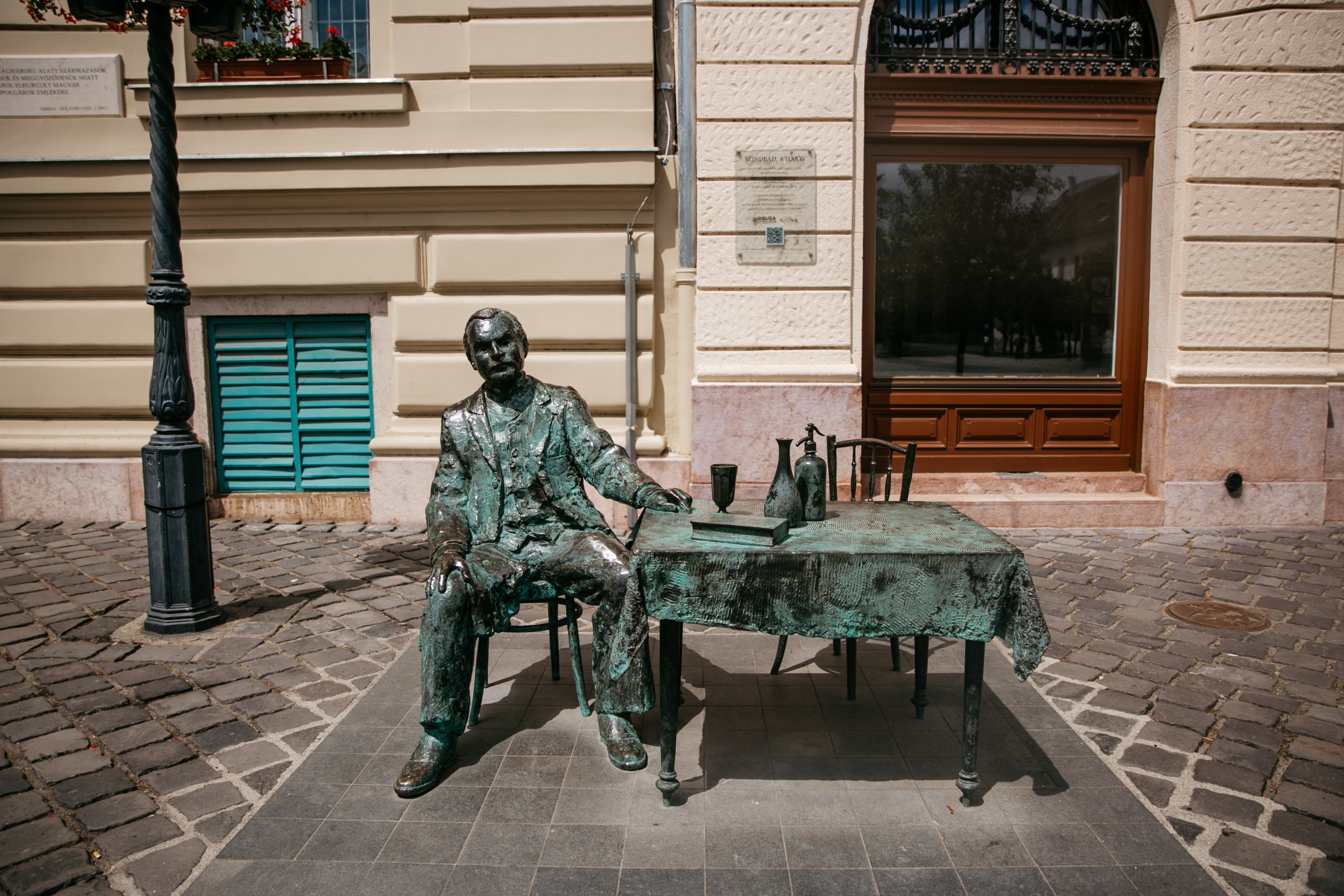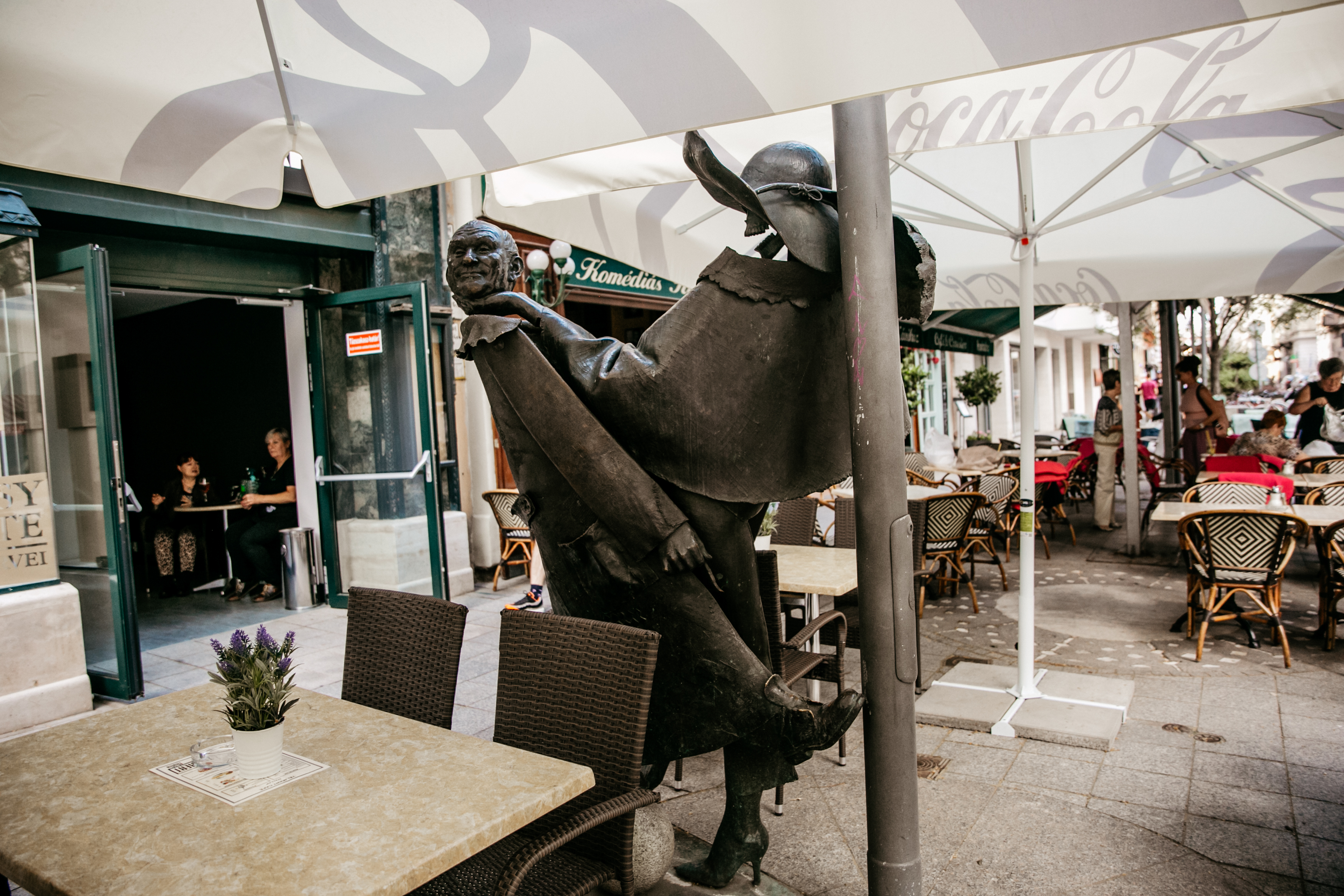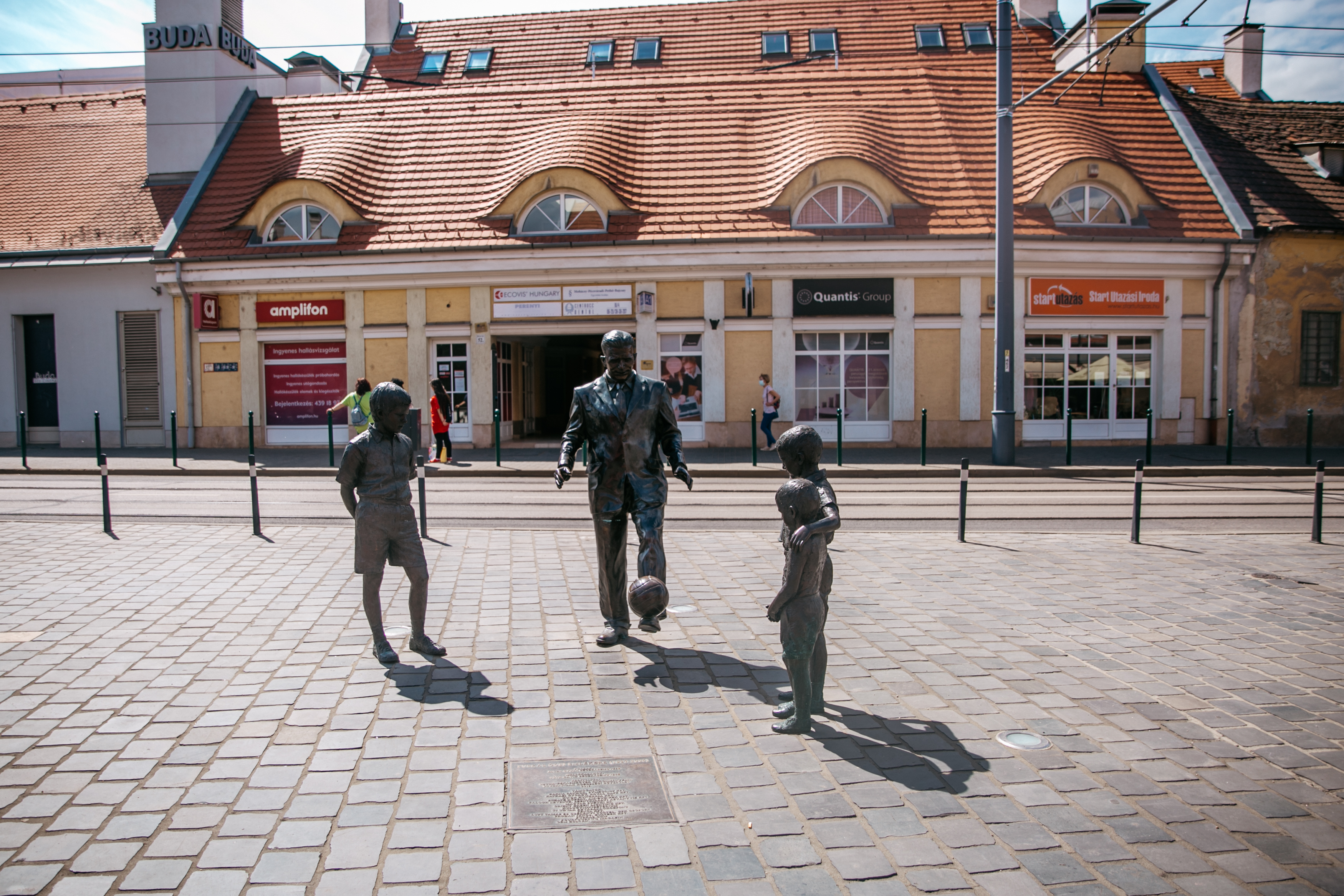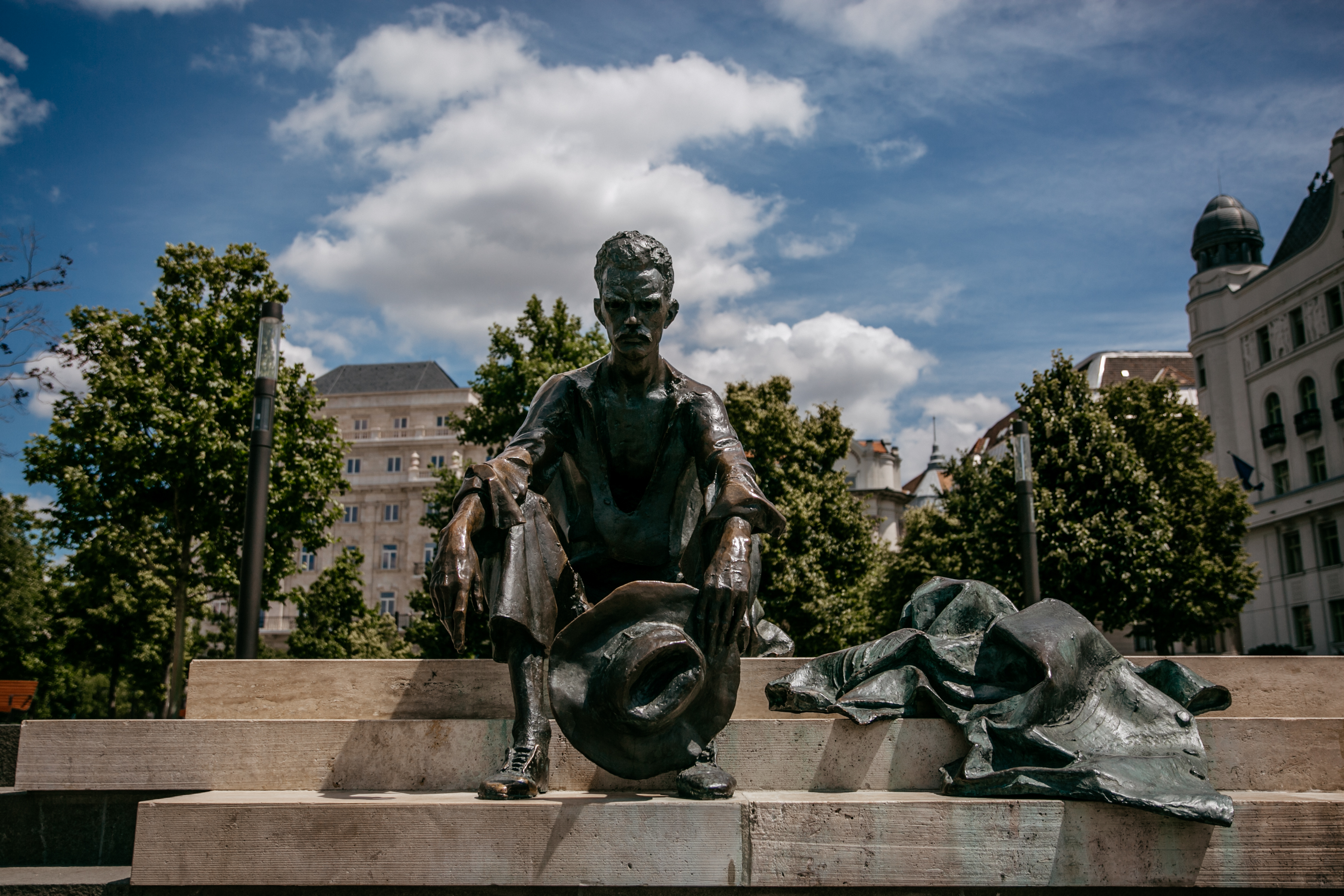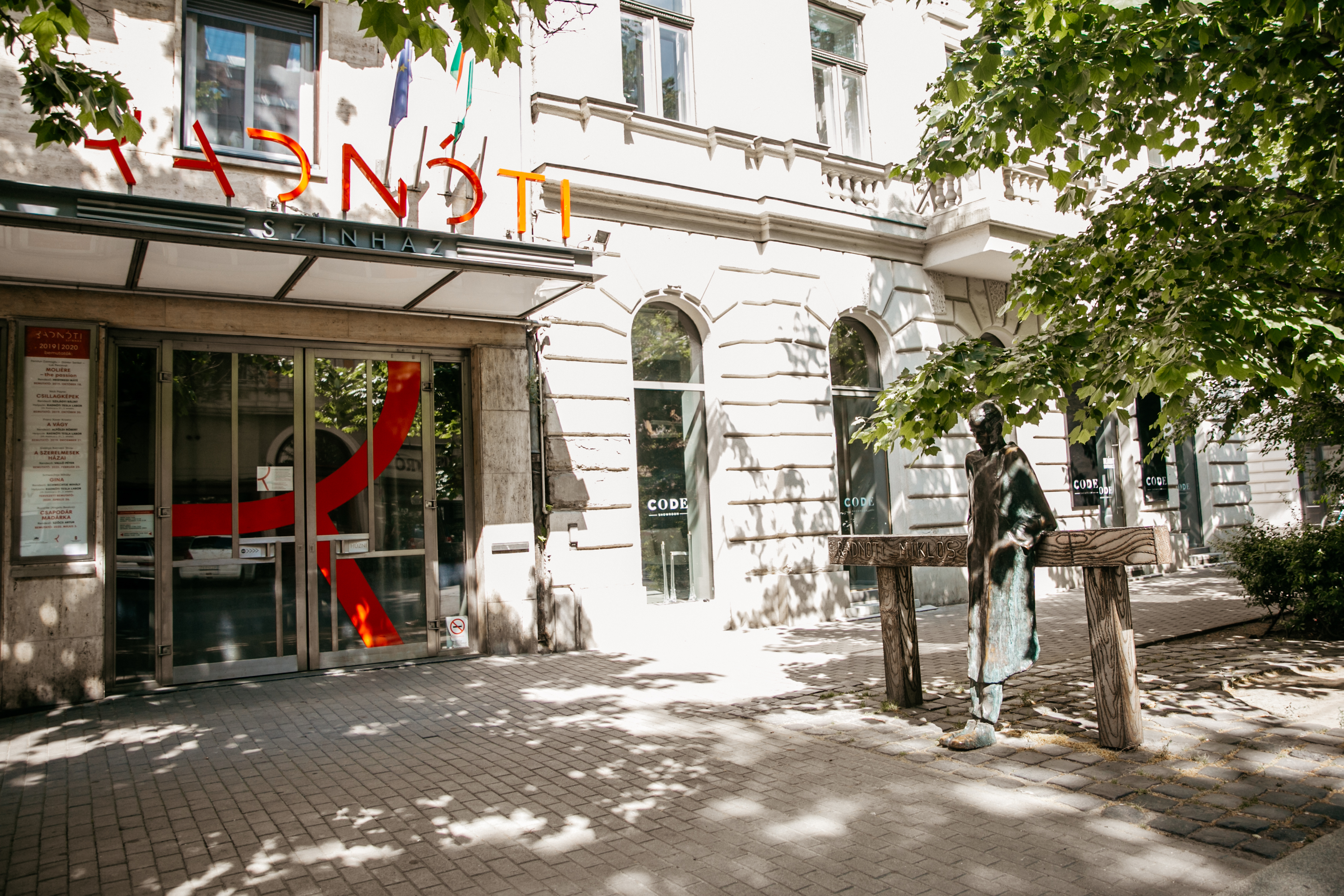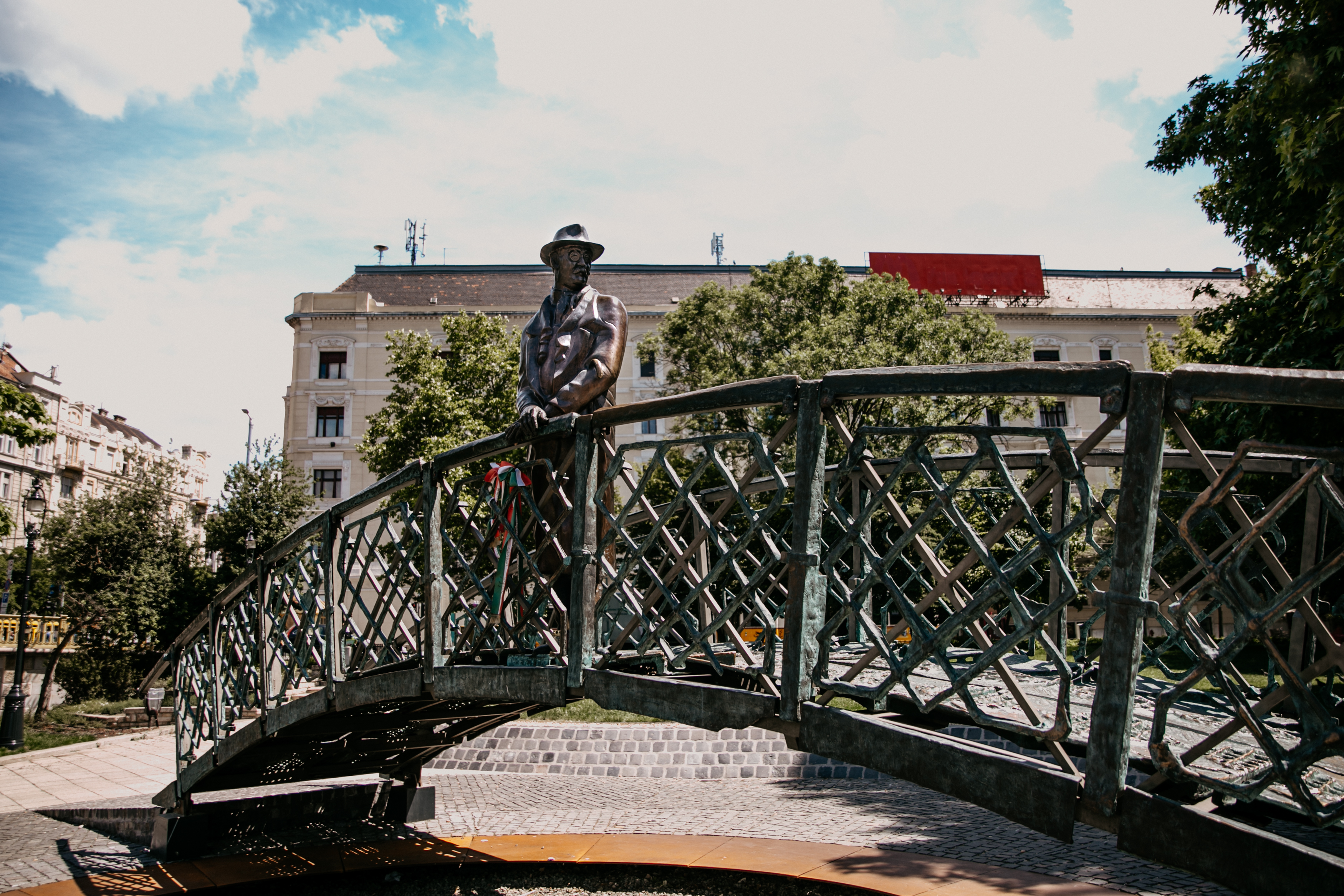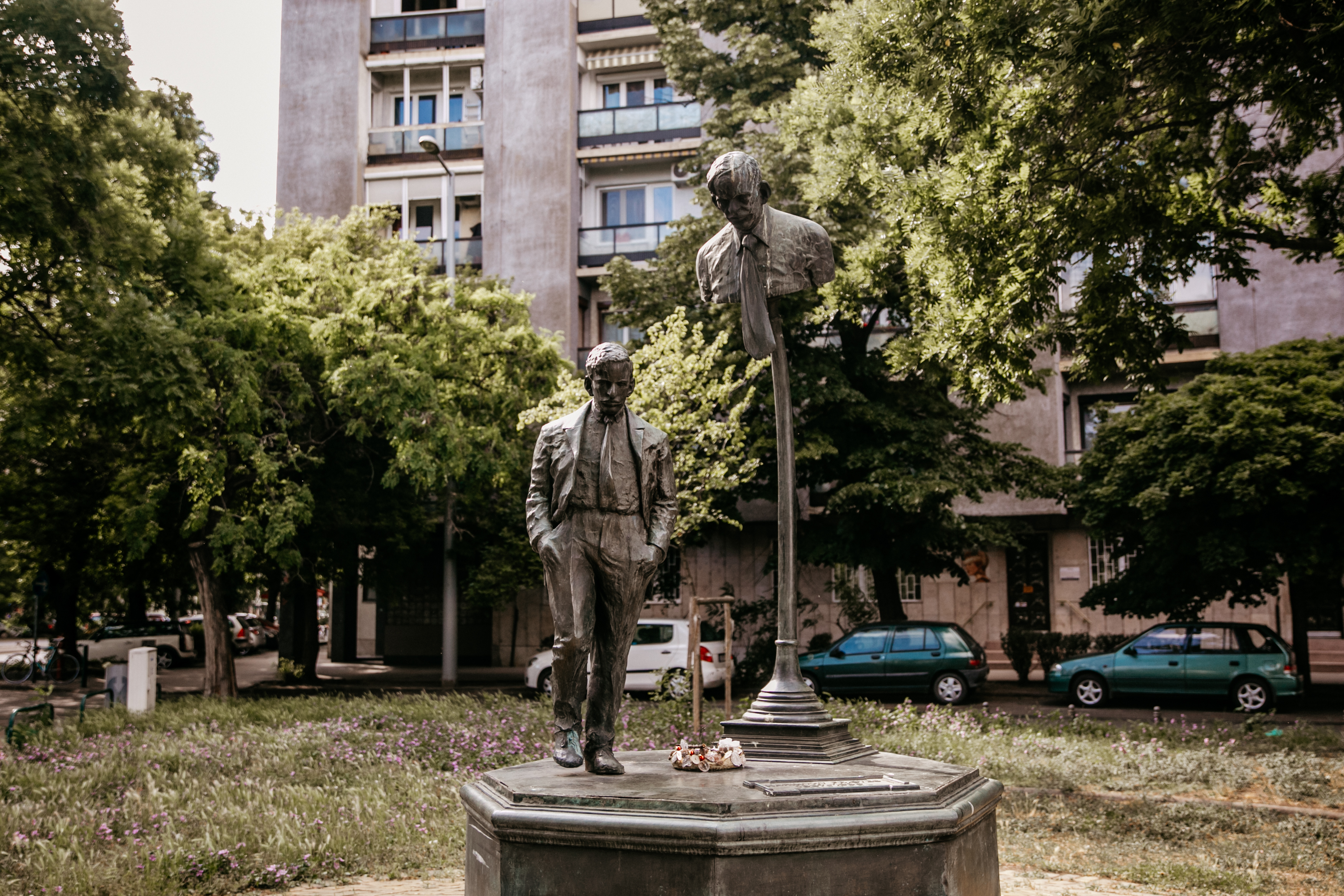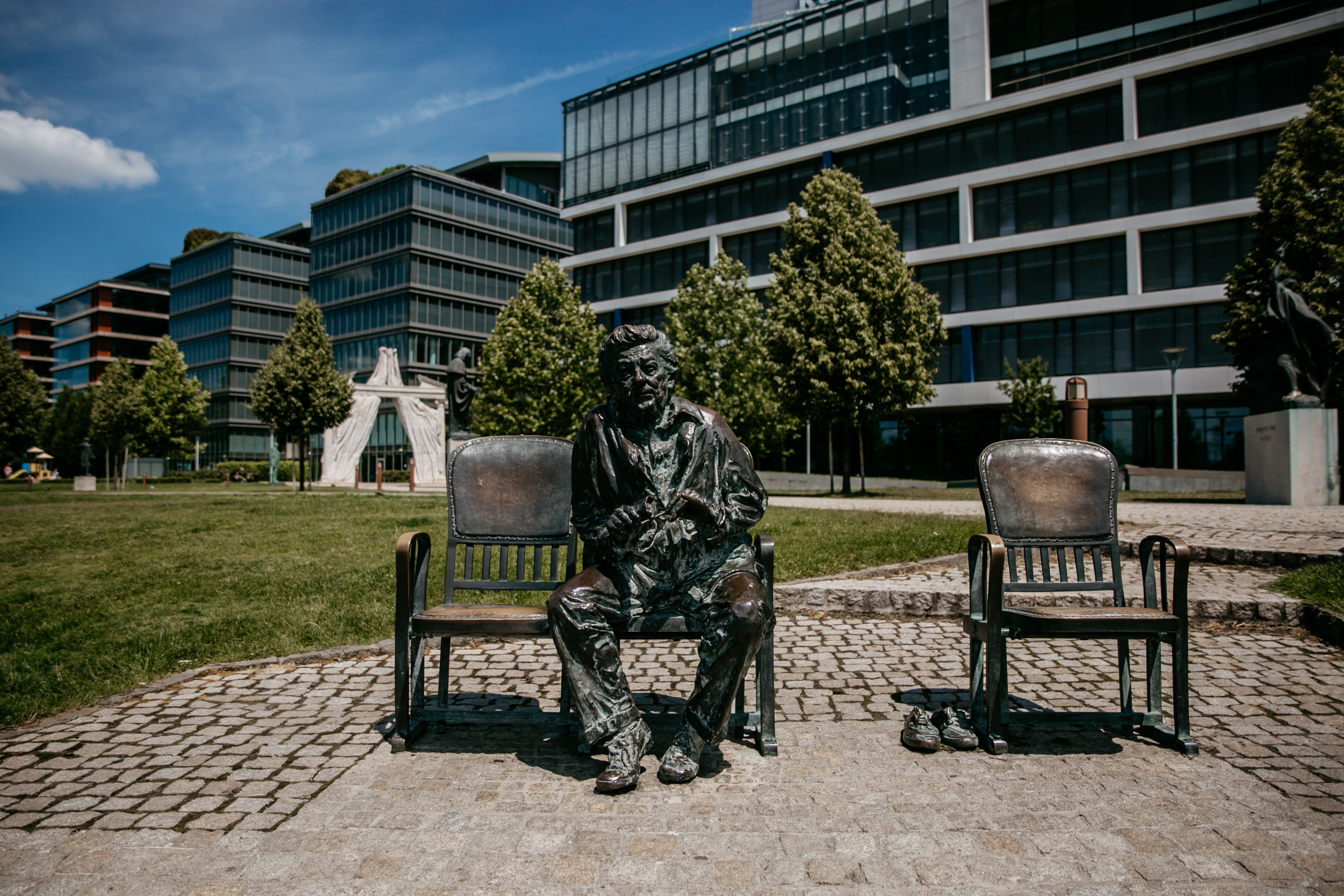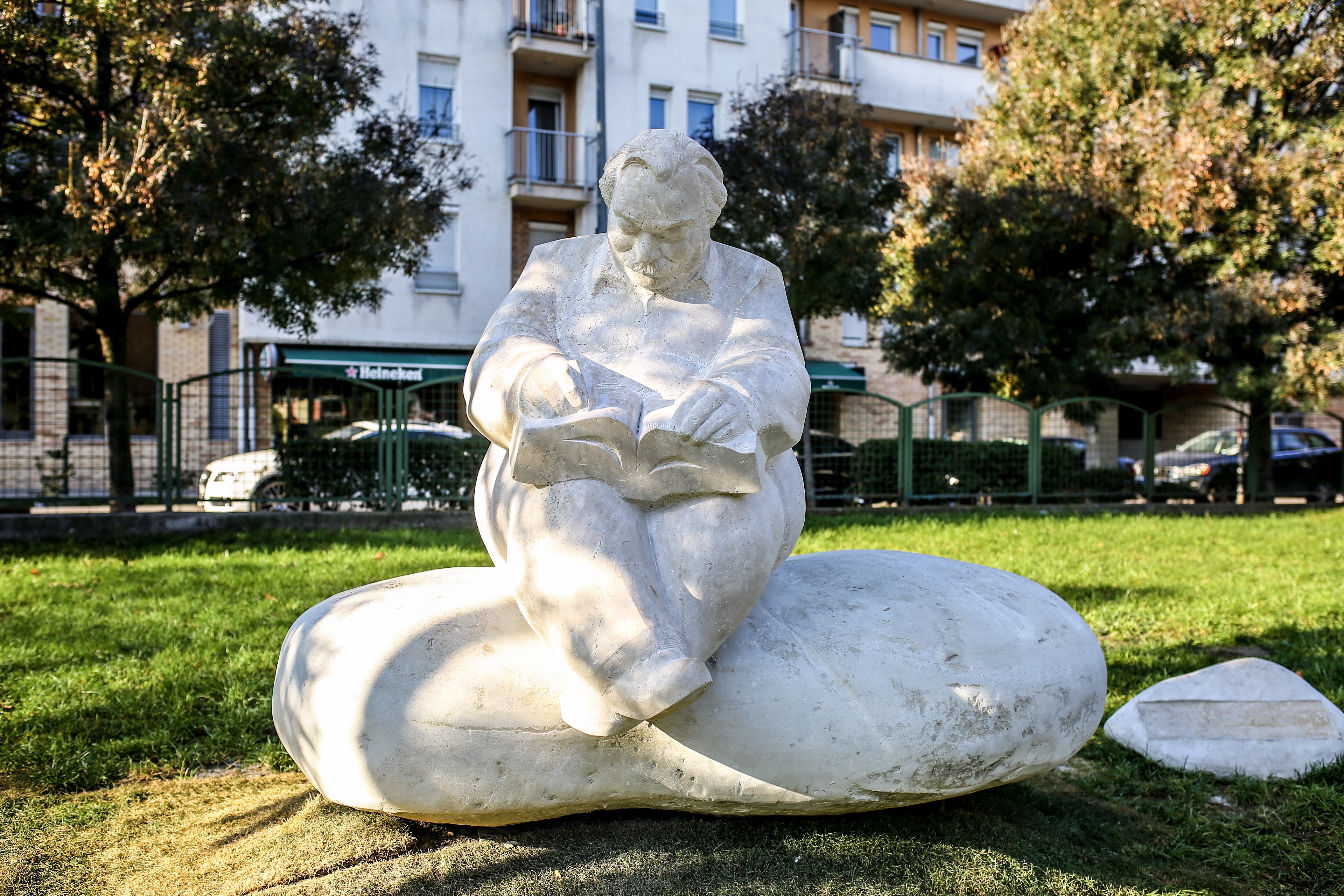Every metropolis has its share of famous people who live on in statue form. For the most part, it’s the same old, same old: a stern bust stares forward through the march of time, a statesman stands with one hand in his pocket, a strong leader surveys the surroundings from horseback. But some statues break the mould, and Budapest has many that turn our attention to the weird and the wonderful.
This man was theatre. He was not a continuation of any kind of tradition, and sadly he will never have any successor. The definition is no exaggeration: he was truly a great dramatic actor. Every really great actor is also a clown, a comic and a tragic hero at the same time. He was able to transform the most tragic events and the most harmful outcomes of human mischief into humour, by laughing, and by making others laugh, with his special talent.
